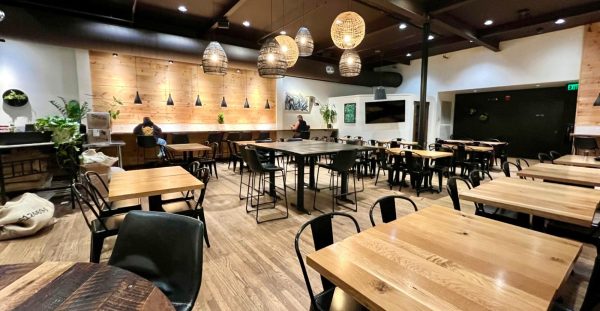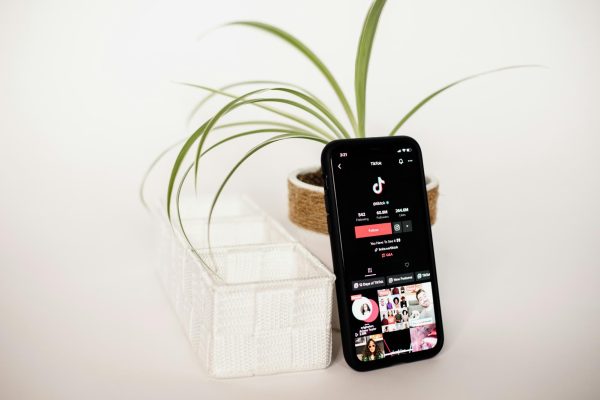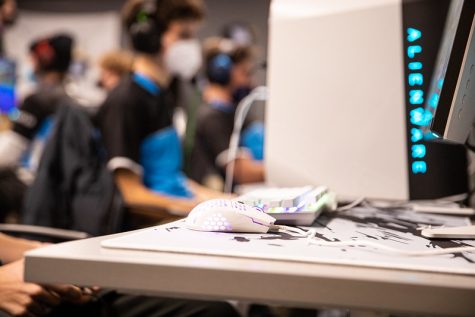A Horrific Spin on a Love Story
Why “The Haunting of Bly Manor” is the representation the world needs.
Movies, TV shows, and books are beginning to have more representation of various races and ethnicities, the LGBTQ+ community, and people of specific minority groups. Although, there is still a long way to go. Many of these productions, specifically ones involving the LGBTQ+ community, have many cliches and stereotypes that are almost cringe-worthy to view. The Haunting of Bly Manor is a representation of the LGBTQ+ community that is different from others I’ve seen.
The Haunting of Bly Manor is supposed to be a horror series; however instead we fall in love with two female characters who are falling in love with each other. Although there are, of course, some jump scares and definitely some creepy scenes, our hearts swell when we see them falling in love.
Mike Flanagan, the director of the show, took a similar approach in his previous show, The Haunting of Hill House, when a character was openly lesbian. She didn’t have to “achieve” anything to be in a relationship with a woman, she just was. Which is how it should be.
The amazing part about this show is that people don’t classify it as a “lesbian love story,” just as you wouldn’t say a show is a “heterosexual love story.” It’s just a love story, and it’s beautiful to watch. In many books, movies, and TV shows showcasing an LGBTQ+ romance, we often see the struggle of acceptance, coming out, abuse from parents, and a lot of the time, there are not happy endings.
Another interesting aspect of The Haunting of Bly Manor is the role of women throughout the show. Often, women are shown in strong roles, not waiting idly by for a man to come save the day. Truthfully, there are only a few men in the show altogether, most of them causing issues for the women (of course, excluding Owen, who was an amazing character).
The characters in the show execute a partial representation of the LGBTQ+ community, specifically; however, several actors on the show are also a part of the community.
T’Nia Miller, who plays Hannah Grose, discusses her opinion of the representation in the show, from the perspective of a lesbian woman: “Let’s look into the good things and the challenges that we face being queer, and it doesn’t necessarily have to be about challenges,” she said in an interview on News Break. Let’s normalize it. When we normalize it on our screens, we have a responsibility, as people in the entertainment industry, to show all sides of our society.”
Kate Siegel, who acts as Viola Lloyd, is openly bisexual, and Victoria Pedretti, known as Dani on the show, is sapphic. These actresses, who are a part of the LGBTQ+ community, open a door for younger members of the community. It shows them that it is not weird to love who you love and be who you want to be. Everyone has their own stories, on screen and off, and they should be allowed to have them.
Not only does this show have representation in the LGBTQ+ community, but it also displays several interracial relationships. Rahul Kohli, or Owen in The Haunting of Bly Manor is of Indian descent and T’Nia Miller is black. Other shows hesitate showing these relationships, but Mike Flanagan does so without regret.
The Haunting of Bly Manor is just a great show. It combines horror with love, as well as loss, and makes the viewer question their own relationship with those ideas. Also, it has some killer scary scenes. The plotline and character arcs are insane, and with each episode, you learn a bit more about the one before. Information is constantly being revealed, and each actor did an amazing job portraying their character.
So, with the telling of a ghost story, we find a love story. I call on future movies, TV shows, and books to remove the bad stereotypes from their works, focusing on the story in itself. If you do, I think you will discover the true meaning of your work.






